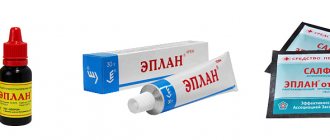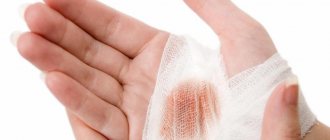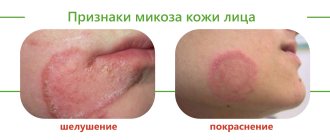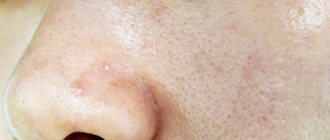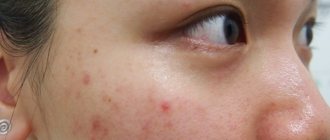HIV infection is a steadily progressive disease in which the Lentivirus Retroviridae virus attacks the human immune system. As a result, the body's defenses are suppressed, which provokes the development of secondary infections and the spread of malignant tumors. Today this disease is found in millions of people. Their life expectancy depends on the stage at which the disease is detected, how well the treatment plan is drawn up, and what the individual characteristics of the body are.
Ask a Question
Early signs
The development of infection caused by the immunodeficiency virus falls into several stages. The incubation period, which lasts 2-4 weeks (in some cases up to six months), often occurs without any characteristic external signs. The virus in the blood at this point is usually not detected in the laboratory. However, destructive processes are already in full swing. This is expressed in:
- massive penetration of the virus into T-helper cells;
- its active reproduction in the blood;
- accumulation of the virus in sexual secretions;
- intensive production of antibodies by the body.
When the amount of protective proteins reaches a critical level, seroconversion occurs. Then the test for the immunodeficiency virus gives a positive result for the first time.
The disease enters an acute phase, and the HIV virus openly “makes itself known” with its first symptoms. Half of infected people have:
- heat;
- multiple enlargement of lymph nodes;
- stool liquefaction;
- profuse skin rashes.
The above symptoms are very similar to the manifestations of a number of other skin diseases, which is why the preliminary diagnosis may be made incorrectly. To make sure that these are symptoms of HIV infection or signs of other diseases, it is necessary to test for the presence of the immunodeficiency virus in the blood.
If a person’s immune system is severely weakened, then he quickly develops:
- fungal infection of the mouth and gastrointestinal tract;
- seborrheic dermatitis;
- pneumonia;
- tuberculosis.
You can suspect that this is one of the signs of HIV based on the protracted course or atypical nature of these infections. The acute phase is again replaced by an asymptomatic period lasting 1-20 years. During it, the immune system still suppresses a significant part of the viral particles. However, their genome is already embedded in the DNA of its cells, which allows the disease to develop covertly, but very intensively, to the stage of AIDS. Acquired immunodeficiency syndrome is accompanied by damage to internal organs and the brain, which inevitably leads to human death.
Skin lesions due to HIV infection
Head of the Dermatovenerology Department of the Solnechnogorsk Central District Clinic Doctor of the highest qualification category Konstantin Viktorovich Mikhailov
HIV infection was first described in 1981. Since then, 22 million people have died from this disease. According to the World Health Organization (WHO), there are 36 million people living with HIV worldwide, including 1.5 million children under 15 years of age. There are more than 65,000 people living with HIV in Europe
AIDS is the final stage of HIV infection, the first type of causative agent of which - the human immunodeficiency virus - was isolated in 1983, the second - in 1986. The enzyme of this virus ensures the replication of RNA on the DNA of the host cell (monocyte, macrophage and dendritic cells of lymph node follicles) .
Phases of HIV infection
Primary HIV infection. In 80% of cases, the period of seroconversion is accompanied by a variety of symptoms - fever, malaise, headache, nausea, vomiting, diarrhea, often with enlarged lymph nodes, a transient maculopapular rash, sometimes erythema and erosions on the oral mucosa.
Early phase. In the early phase of HIV infection, 50% of patients exhibit both antibodies to HIV and its p24 antigen. The proportion of CD4 lymphocytes decreases. This phase is accompanied by secondary skin changes. The antibody titer to HIV increases within 6-8 weeks from the onset of the disease, which requires its re-determination.
Late phase of HIV infection. At this stage, skin changes are varied. Skin diseases such as psoriasis and seborrheic dermatitis are especially difficult. Due to weakened immunity, severe skin infections, including opportunistic ones, occur. In addition, 34% of homosexual patients and 5% of other patients develop Kaposi's sarcoma. HIV infection should be suspected in cases of severe, intractable inflammatory diseases or severe extensive skin infections.
Skin lesions due to HIV infection
Lesions of the skin and mucous membranes in persons infected with HIV acquire a number of characteristics: they occur in different age groups, manifest themselves atypically, have a severe course, and are difficult to treat.
Acute exanthema caused by HIV may appear within a few weeks after infection.
The following diseases are of greatest diagnostic importance: Kaposi's sarcoma, candidiasis (especially persistent candidiasis of the mucous membranes of the oral cavity and perianal region), lichen simplex and herpes zoster, seborrheic dermatitis, “hairy” leukoplakia of the oral mucosa, molluscum contagiosum and vulgar warts.
| Acute Exanthema. Characterized by the appearance on the skin of the torso, individual elements in rare cases on the face and neck, a widespread or localized rash resembling exanthema in measles or syphilitic roseola. There is no peeling. Regression within a period of 3 to several weeks. |
| Kaposi's sarcoma. Its causative agent is herpes virus type 8. It manifests itself mostly as small spots on the face, palate, torso, and groin areas; The color of the spots ranges from red or purple to brown. They turn into large bluish-gray plaques. In addition to the skin of the torso, limbs and face, the mucous membrane of the mouth, as well as the palate and nose are affected. Sometimes the rash gets larger quickly. |
| Herpes and Shingles. Characterized by extensive and severe lesions. With herpes zoster, they are not limited to one affected area (dermatome). Sometimes ulcerative-necrotic forms are observed. |
| Seborrheic dermatitis. As a rule, it occurs acutely and more severely than usual, often and may initially be the only skin lesion. It is observed in 40-80% of patients. It is characterized by the appearance of spots and plaques covered with fatty hyperkeratotic scales and yellowish crusts. |
| "Hairy" leukoplakia. Its occurrence is due to the replication of the Epstein-Barr virus at the site of the clinical lesion. It is characterized by thickening of the mucous membrane, white in color, with unclear boundaries. The lesions have an uneven, wrinkled (corrugated) surface. The most typical place of localization is the marginal zone of the tongue. |
| Molluscum contagiosum. Poxovirus infection occurs in approximately 8-18% of patients. HIV most often affects the skin of the face, torso, folds and buttocks, as well as in the genital area. Flesh-colored papules with an umbilical depression in the center appear. Lesions can be large - giant clam. |
This information is of an overview nature. If you suspect a change in your health for the worse, consult a doctor at a specialized institution.
Used literature from the following authors:
Yu.K. Skripkin, V.N. Mordovtsev, A.N. Radionov, James E. Fitzpatrick, John L. Eling, George W. Turansky, William D. James. Internet resources.
Rash
Skin rashes appear in people infected with the immunodeficiency virus in different forms. It all depends on the stage of development of the disease and the individual characteristics of the body. For example:
- in the acute phase, a rash is observed throughout the body and seborrheic dermatitis, in severe cases - the spread of fungus in the oral cavity;
- in the stage of secondary manifestations, candidiasis of the oral cavity or genital organs, shingles occurs;
- with AIDS, candidiasis penetrates into the body.
The answer to the question of whether these are symptoms of HIV or signs of common skin infections will be given by a laboratory blood test for the presence of the immunodeficiency virus. At the acute stage of the disease, it is already possible to detect the active release of particles of this serious virus into the blood.
Bacterial infections
Ulcerative-necrotizing gingivitis develops in HIV-infected individuals both during various periods of clinical manifestations of AIDS, and without them in the presence of antibodies against the virus. Patients complain of pain and bleeding gums while brushing their teeth and eating; bad breath. Upon examination, a gray-yellow plaque (necrotic film) is found covering the gingival margin and interdental papillae. The mucous membrane in the gum area is hyperemic, swollen, and tense.
After treatment, the symptoms disappear, but there is a tendency to relapse. A prolonged course can lead to deep ulcers with damage to bone structures and necrotization of the interdental septum (Fig. 4).
Rice. 4. Herpes simplex on the lip.
The consequence of gingivitis is periodontitis (periodontitis) with irregular generalized destruction of bone tissue and the supporting-retaining apparatus of the tooth. Treatment of patients does not provide lasting results.
Is it possible to identify HIV-infected people by their rash?
Skin rashes are considered to be one of the first symptoms of damage. The rash associated with HIV infection is often accompanied by intense itching. The appearance of the rash helps the doctor diagnose and determine the cause of the pathology.
With HIV, the rash consists of raised pimples and red spots. They are formed separately or fill any part of the body completely. In the first stages of the lesion, the rash is localized on the face, chest, neck, back and arms. With HIV, it is always accompanied by the following symptoms:
- nausea with vomiting;
- formation of ulcers in the oral cavity;
- strong increase in temperature;
- disruption of the digestive system;
- swollen lymph nodes;
- clouding of consciousness;
- deterioration in the functioning of visual analyzers;
- poor appetite.
READ ALSO: What should I bathe my child in if he has allergies or skin rashes?
At the first signs of infection, you should visit a doctor. He conducts laboratory diagnostics, after which the causes and nature of the development of the disease are established, and treatment is carried out.
HIV tests, prices, when to get tested
According to testing standards, blood for HIV is donated three times after the threat of infection - 3, 6 and 12 months from the moment of suspected infection. It is not at all necessary to do this at home using pharmacy tests or in private clinics. The best decision would be to contact the AIDS CENTER, which is in every city, and describe the situation to the doctor. The doctor will decide whether emergency prevention of HIV infection is needed (antiviral drugs are prescribed) or whether there is no threat to health. Examination and treatment when visiting such a center are free of charge.
Victoria Druzhikina
Neurologist, Therapist
You can donate blood yourself in a private clinic; the average cost of the test is 400 rubles.
Life expectancy with timely detection of the virus and early initiation of therapy does not differ from the life expectancy of a person without HIV infection. Without treatment, the condition enters the AIDS phase, which is approximately 5-10 years before death.
This article has been verified by a current qualified physician, Victoria Druzhikina, and can be considered a reliable source of information for site users.
Bibliography
1.https://aidsvolgograd.ru/wp-content/uploads/2017/08/Clinical-protocols-HIV-2017.pdf 2. https://pharmacta.ru/d/2015-10-30_4994.pdf https: //www.rcrz.kz/docs/clinic_protocol/2015/Therapy/Infectious%20diseases/3%20HIV%20u%20adults.pdf
Rate how useful the article was
4.3 12 people voted, average rating 4.3
Did you like the article? Save it to your wall so you don’t lose it!
Forecast
HIV-related rashes vary greatly. The specific prognosis depends on the type of rash, as well as individual factors such as general health, use of antiretroviral drugs, access to medical care, and exposure to contagious skin diseases.
The rash associated with seroconversion, which occurs soon after infection, usually goes away on its own.
Rashes due to chronic conditions such as herpes and psoriasis tend to come and go. The severity of each outbreak varies but depends in part on the immune system. Some medications, such as herpes antivirals, can reduce the severity of each outbreak.
Rash caused by infections will go away with proper treatment. However, because HIV continually weakens the immune system, the infectious rash may return. Cellulite in particular tends to recur. People with HIV who have had one infectious rash may also develop another infectious rash later.
How does the disease manifest itself after a month?
After 1 month, the first bright symptoms of HIV, as a rule, are muffled, and the pathology continues to progress and destroy the immune system from the inside. HIV infection can manifest itself with the following symptoms, which initially appear sporadically, and over time develop into permanent conditions:
- prolonged colds and exacerbation of chronic ones;
- headaches and migraines (read about other possible causes of headaches here);
- increased fatigue and insomnia (a somnologist and neurologist will help you cope);
- depression and a feeling of apathy (consulting a psychologist will help you cope);
- digestive disorders and rapid loss of muscle mass;
- persistent diseases of the genitourinary system (thrush, endometriosis, erosion, and so on);
- exacerbating manifestations of herpes simplex and genital;
- damage to the skin and mucous membranes by multiple or single ulcers, pustules, rashes (for treatment, consult a dermatologist);
- ENT diseases, aggravated by manifestations of a painful cough (consults ENT);
- muscle pain and aches;
- increased sweating and dizziness (other causes of dizziness are described here).
The listed first signs of HIV in women can be either single or join each other, acquiring multiplicity, and have both mild and more pronounced manifestations.
If at the very beginning of infection the disease could not be recognized even by a blood test, then after 1 month a test for HIV infection shows the real picture. It is important not to ignore the first warning symptoms of HIV that occur at an early stage, especially if a woman is included in the so-called “risk group”:
- underwent a blood transfusion;
- got a tattoo, piercing;
- often changes sexual partners.
A woman should be wary of the duration of the symptoms that arose at the initial stage or the illogicality of their appearance (for example, digestive disorders without the slightest change in diet).
It should be remembered that when the first signs of HIV infection occur, in specialized AIDS prevention centers you can take both a rapid HIV test and a detailed laboratory analysis on a completely anonymous basis.
What to do if a rash and signs of HIV appear?
The doctor begins HIV treatment only after a detailed diagnosis and confirmation of the diagnosis. But until now, adequate therapy and drugs have not been developed that would help completely get rid of the immunodeficiency virus, leading to complete recovery.
The most modern method is antiretroviral therapy - HAART. It allows you to slow down the active development of the disease and stop its transition to the AIDS stage. Thanks to this, the patient’s life is extended by several decades, the main thing is compliance with the rules for lifelong use of medications prescribed by the doctor.
The main danger of the immunodeficiency virus is the possibility of its mutations. If medications against pathology are not changed at certain intervals, the virus begins to adapt and stops responding to treatment, it becomes ineffective. The doctor changes treatment tactics and medications at different intervals.
Therapy will be more effective if the patient’s lifestyle is normalized. The quality of life must be improved - maintain a work-rest schedule, normalize nutrition, avoid stressful situations, and lead an active lifestyle.
The main points of treatment for HIV infection are:
- drug therapy;
- preparation of a special diet;
- prevention of exacerbations.
